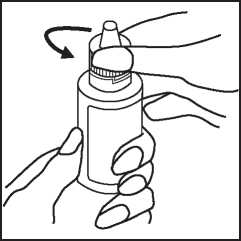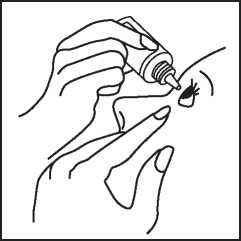Latanoprost 0.005% W/V Eye Drops Solution
399 mm
-<-
■<- 133 mm -►!
co
OJ
I
III Will Will Will llll III
000000
Pregnancy and breast-feeding
Do not use Latanoprost eye drops if:
• you are pregnant. Tell your doctor immediately if you are pregnant, think you are pregnant, or are planning to become pregnant.
• you are breast-feeding.
Ask your doctor or pharmacist for advice before taking any medicine.
o
o
CO

Read all of this leaflet carefully before you start using this medicine because it contains important information for you.
• Keep this leaflet. You may need to read it again.
• If you have any further questions, ask your doctor or pharmacist.
• This medicine has been prescribed for you only. Do not pass it on to others. It may harm them, even if their signs of illness are the same as yours.
• If you get any side effects, talk to your doctor or pharmacist. This includes any possible side effects not listed in this leaflet. See section 4.
In this leaflet:
1. What Latanoprost Eye Drops are and what they are used for
2. What you need to know before you use Latanoprost Eye Drops
3. How to use Latanoprost Eye Drops
4. Possible side effects
5. How to store Latanoprost Eye Drops
6. Contents of the pack and other information
1. What Latanoprost Eye Drops are and what they are used for
Latanoprost belongs to a group of medicines called prostaglandins. It works by increasing the natural outflow of fluid from inside the eye into the bloodstream.
Latanoprost eye drops are used to treat conditions known as open angle glaucoma and ocular hypertension. Both of these conditions are linked with an increase in the pressure within your eye, eventually affecting your eye sight.
2. What you need to know before you use Latanoprost Eye Drops
Latanoprost eye drops can be used in adult men and women (including the elderly) but is not recommended for use if you are less than 18 years of age.
Do not use Latanoprost eye drops if:
• you are allergic to latanoprost or to any of the other ingredients of this medicine (listed in section 6).
Do not use this medicine if the above applies to you. If you are not sure, talk to your doctor or pharmacist before using Latanoprost eye drops.
Warnings and precautionsTalk to your doctor or pharmacist before using this medicine if:
• you have a condition known as chronic angle closure glaucoma, neovascular glaucoma or congenital glaucoma.
• you are about to have or have had eye surgery (including cataract surgery).
• you have an eye in which a lens is not present or is partially or completely opaque.
• you have a condition known as diabetic retinopathy or retinal vein occlusion.
• you suffer from eye problems (such eye pain, irritation or inflammation, blurred vision)
• you have ever been treated for eye problems known as iritis and uveitis or know you suffer from dry eyes.
• you have severe asthma or your asthma is not well controlled.
• you wear contact lenses. You can still use Latanoprost eye drops, but follow the instructions for contact lens wearers in Section 3 ‘Using the medicine’.
• you have suffered or are currently suffering from a viral infection of the eye caused by the herpes simplex virus (HSV).
If any of the above applies to you (or you are not sure), please talk to your doctor or pharmacist before using Latanoprost eye drops.
Other medicines and Latanoprost eye drops
Tell your doctor or pharmacist if you are taking or have recently taken or might take any other medicines.
• Tell your doctor or pharmacist if you are using other medicines for your eyes.
If this applies to you (or you are not sure), talk to your doctor or pharmacist before using Latanoprost eye drops.
Driving and using machines
You may find it difficult to see when you first add your eye drops. Do not drive or use any tools or machines until you know how Latanoprost eye drops affect you. Ask your doctor or pharmacist if you are not sure.
Latanoprost eye drops contain benzalkonium chloride
This may irritate your eyes. Benzalkonium chloride is also known to discolour soft contact lenses. You should avoid contact with soft contact lenses. Remove your contact lenses before using Latanoprost eye drops and wait 15 minutes before you put your contact lenses back in.
3. How to use Latanoprost Eye Drops
Always use this medicine exactly as your doctor has told you.
Check with your doctor or pharmacist if you are not sure.
The recommended dose is one drop each day in the affected eye(s).The best time to do this is in the evening.
Do not use Latanoprost eye drops more than once a day, because the effectiveness of the treatment can be reduced if you administer it more often.
Using the medicine
Contact lens wearers
If you wear contact lenses, take them out before you use Latanoprost eye drops. Wait 15 minutes before you put your contact lens back in after using Latanoprost eye drops.
Instructions for use
• If you are using any other eye drops, wait 5 minutes before using them after Latanoprost eye drops.
1. Wash your hands and sit or stand comfortably.
2. Twist off the cap as shown below:
3. Use your finger to gently pull down the lower eyelid of your affected eye.
4. Place the tip of the container close to your eye taking care not to touch your eye.
5. Squeeze the container gently so that only one drop goes into your eye, then let go of your eyelid.
6. Press a finger against the corner of the affected eye by the nose. Hold for 1 minute whilst keeping the eye closed.

o
o
CO
co
OJ
I
<
133 mm
■>
7. Repeat steps 3 to 6 for the other eye if your doctor has told you to do this.
8. Place the cap back on the bottle.
If you use more Latanoprost eye drops than you should
If you put too many drops into your eye, you may experience some minor irritation in your eye and your eye may water and turn red. This should pass, but if you are worried contact your doctor for advice.
Contact your doctor as soon as possible if you swallow Latanoprost eye drops accidentally.
If you forget to use Latanoprost eye drops
Carry on with the usual dosage at the usual time. Do not use a double dose to make up for the dose you have forgotten. If you are unsure about anything talk to your doctor or pharmacist.
If you stop using Latanoprost eye drops
You should speak to your doctor if you want to stop using Latanoprost eye drops.
If you have any further questions on using this medicine, ask your doctor or pharmacist.
4. Possible side effects
Like all medicines, this medicine can cause side effects, although not everybody gets them. The following side
effects may happen with this medicine:
Very common (affects more than 1 in 10 people)
• gradual change in eye colour by increasing the amount of brown pigment in the coloured part of the eye known as the iris. If you have mixed-colour eyes (blue-brown, grey-brown, yellow-brown or green-brown) you are more likely to see this change than if you have eyes of one colour (blue, grey, green or brown eyes). Any changes in your eye colour may take years to develop although it is normally seen within 8 months of treatment. The colour change may be permanent and may be more noticeable if you use Latanoprost eye drops in only one eye. There appears to be no problems associated with the change in eye colour. The eye colour change does not continue after Latanoprost eye drops treatment is stopped.
• redness of the eye
• eye irritation (a feeling of burning, grittiness, itching, stinging or the sensation of a foreign body in the eye).
• a gradual change in your eye lashes. A gradual change to eyelashes of the treated eye and the fine hairs around the treated eye, seen mostly in people of Japanese origin. These changes involve an increase of the colour (darkening), length, thickness and number of your eye lashes.
You can also report side effects directly via Yellow Card Scheme Website: www.mhra.gov.uk/yellowcard
By reporting side effects you can help provide more information on the safety of this medicine.
5. How to store Latanoprost Eye Drops
• Keep this medicine out of the sight and reach of children.
• Do not use this medicine after the expiry date which is stated on the carton and container after EXP The expiry date refers to the last day of that month.
• Keep the bottle in the outer carton in order to protect from light.
• Store in a refrigerator (2°C - 8°C).
• After first opening: Do not store above 25°C and use within four weeks.
Do not throw away any medicines via wastewater or household waste. Ask your pharmacist how to throw away medicines you no longer use. These measures will help protect the environment.
6. Contents of the pack and other information
What Latanoprost eye drops contain
• The active substance is latanoprost.
• 1 ml of eye drops solution contains 50 micrograms of latanoprost (0.005% w/v).
• Each drop contains 1.5 micrograms latanoprost.
• The other ingredients are sodium chloride, disodium phosphate anhydrous, sodium dihydrogen phosphate monohydrate, benzalkonium chloride and water for injections.
What Latanoprost eye drops look like and contents of the pack
• The drops are a clear colourless solution.
• The drops are available in a 5 ml bottle, containing 2.5 ml eye drop solution.
• The drops are available in boxes of 1 x 2.5 ml and 3 x 2.5 ml.
• Not all packs may be marketed.
Marketing Authorisation Holder and Manufacturer Marketing Authorisation Holder:
Apotex Europe BV, Darwinweg 20, 2333 CR Leiden, The Netherlands
Common (affects less than 1 in 10 people) Manufacturer:
• irritation or disruption to the surface of the eye, eyelid inflammation (blepharitis) and eye pain. Apotex Nederland BV, Archimedesweg 2, 2333 CN Leiden, The Netherlands
This leaflet was last revised in October 2013.

Uncommon (affects less than 1 in 100 people)
• eyelid swelling, dryness of the eye, inflammation or irritation of the surface of the eye (keratitis), blurred vision and conjunctivitis.
• skin rash.
Rare (affects less than 1 in 1,000 people)
• inflammation of the iris, the coloured part of the eye (iritis/uveitis); swelling of the retina (macular oedema), symptoms of swelling or scratching/damage to the surface of the eye, swelling around the eye (periorbital oedema), misdirected eyelashes or an extra row of eyelashes, light sensitivity (photophobia).
• skin reactions on the eye lids, darkening of the skin of the eyelids.
• asthma, worsening of asthma, shortness of breath (dyspnoea).
Very rare (affects less than 1 in 10,000 people)
• Worsening of angina in patients who also have heart disease, chest pain, sunken eye appearance (eye sulcus deepening).
Patients have also reported the following side-effects: fluid filled area within the coloured part of the eye (iris cyst),
headache, dizziness, palpitations, muscle pain, joint pain and developing a viral infection of the eye caused by the
herpes simplex virus (hSv).
Reporting of side effects
If you get any side effects,talk to your doctor or pharmacist. This includes any possible side effects not listed in this
leaflet.